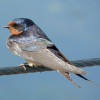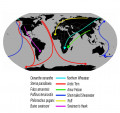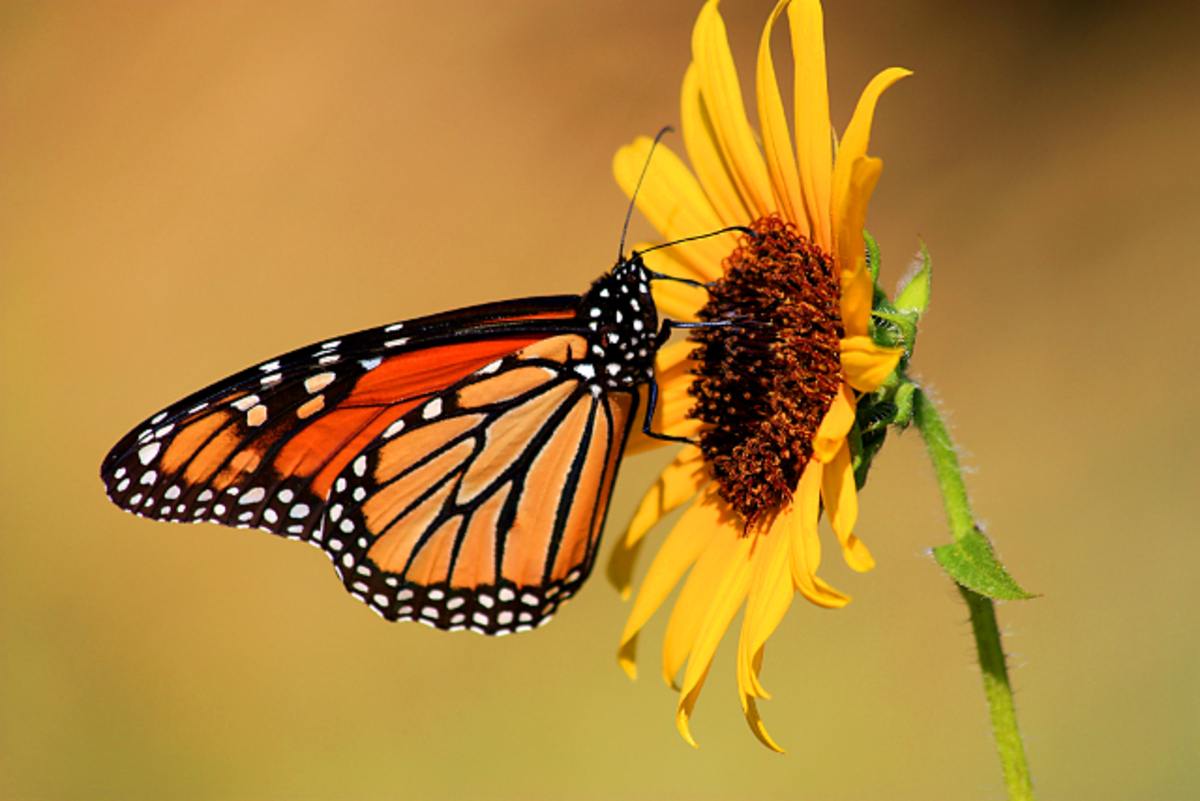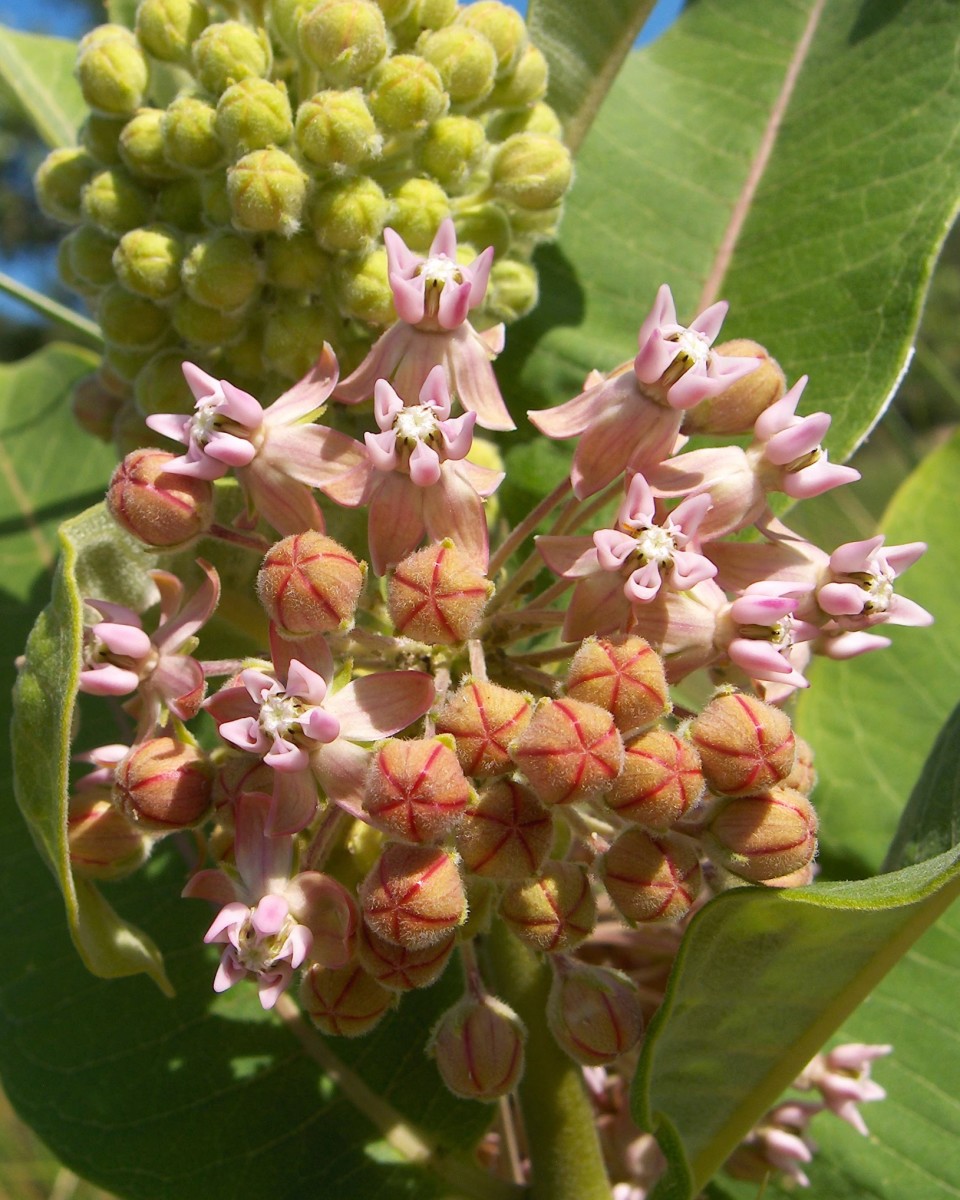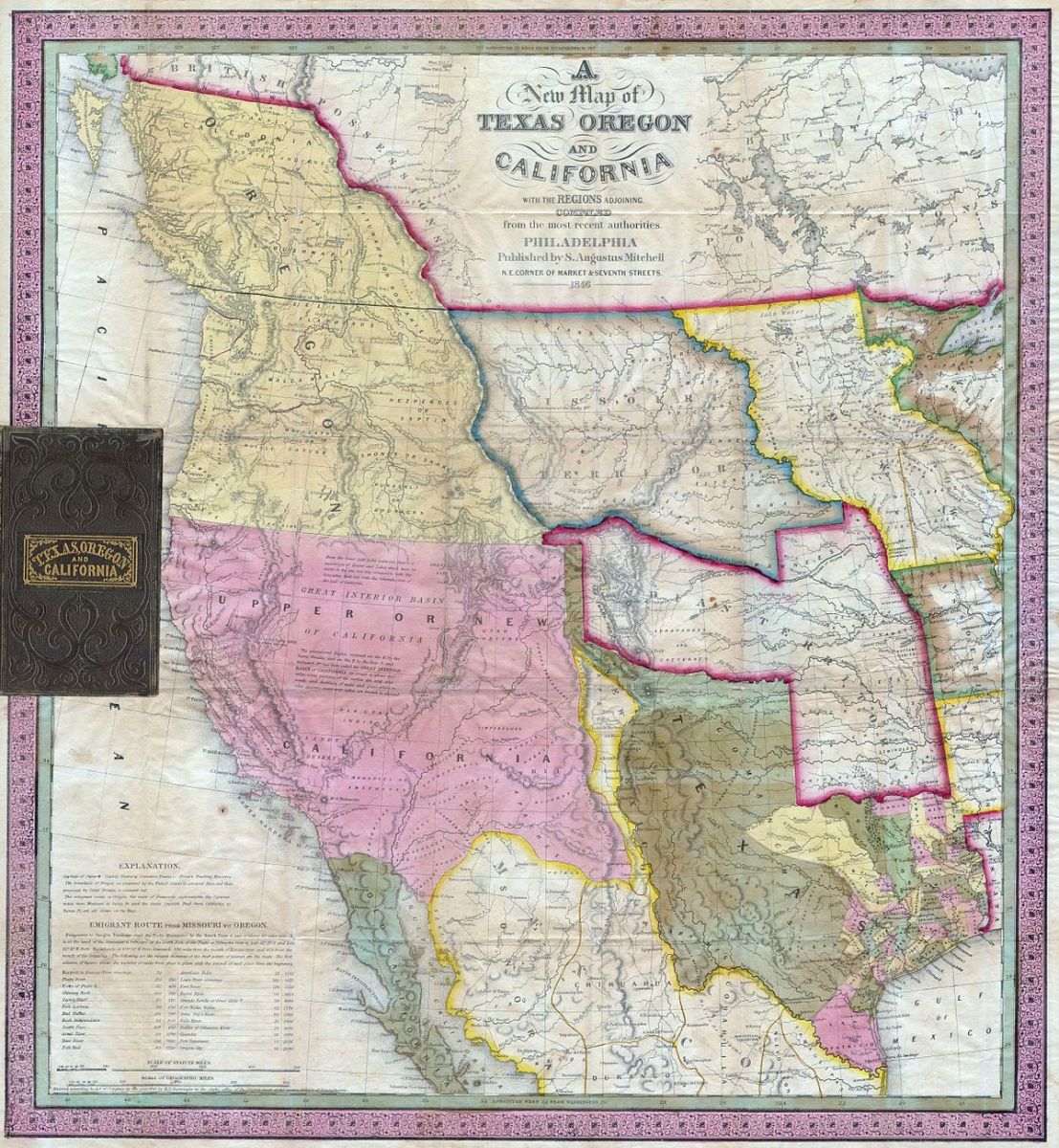Monarch Butterfly Migration
The Migration of Monarch Butterflies
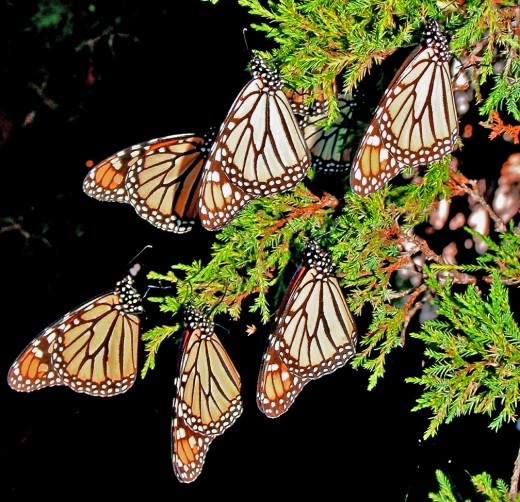
The yearly autumn mass migration of the North American Monarch Butterfly (Danaus plexippus), starting in September and October of each year, is a truly amazing phenomenon!
Did you know that the Monarch Butterflies of North America can migrate up to 3000 miles? It's hard to imagine that something as delicate-looking as a butterfly can travel that far, but some North American monarchs migrate very long distances, as far as from Canada to Central Mexico.
Monarchs are one of the most widely recognized butterflies in North America, but they can also be found in South America, parts of Australia and New Zealand, and occasionally in a few areas of Europe. Only the North American monarch butterfly migrates any great distance.
In fact, the migration of the monarch butterfly is the largest and longest migration of any North American insect. But the individuals who migrate south for the winter only make this trip once. The group of monarchs that fly south the next year are the fourth generation after the previous year's migration.
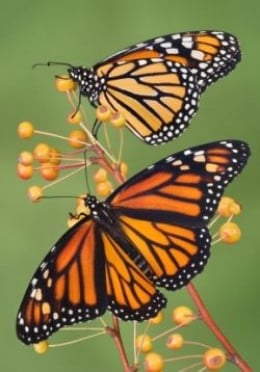
Why Do Monarchs Migrate?
Monarchs Migrate South to Escape the Cold, and North to Find Food
Monarch butterflies and their larvae (caterpillars) and pupae (chrysalises) can't live through the cold winters of northern climates, and need to travel south for the monarch population to survive. In other butterfly and insect species, the larvae and the pupae, and in some cases the adults, can overwinter in the colder climates, so there's no need for them to migrate.
Monarchs in other parts of the world don't migrate, or just migrate for short distances because their populations live in areas where winters aren't as severe.
So why don't the North American monarchs just stay south then, if they can't survive the colder northern winters? Because monarch larvae (caterpillars) can only feed on milkweed plants which don't grow in the areas where the adults overwinter. The adults have to fly north again to lay their eggs where milkweed is plentiful.
There's a theory that the North American population of monarch butterflies didn't migrate these long distance until sometime after 1865. In the article The Biogeography of the Monarch Butterfly, the author says that when European colonists to North America destroyed much of the forested areas of the mid-continent, the opportunistic milkweed plant species expand north into these deforested areas. Monarchs followed the northward expansion of the milkweed, but only the populations that moved back south again for the winter managed to survive.
Monarch photo from ButterflyPictures.net
Where Do Monarchs Spend the Winter?
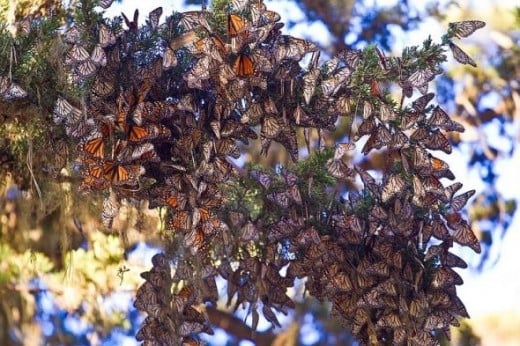
North American Monarchs Migrate to One of Two Areas
1. Southern coast of California - Those that live west of the Rockies migrate to the southern coast of California near Santa Cruz and San Diego. Here the monarchs roost in eucalyptus trees and Monterey pines and Monterey cypresses.
2. Central Mexico - Up to three hundred million monarch butterflies that live east of the Rockies in Canada and in the United States fly to Mexico each year, funnel down through Texas to a small area in the mountains of Central Mexico. They roost in Oyamel fir forests at an elevation of about 2 miles above sea level.
In both California and in Mexico, the monarchs gather in dense clusters to stay warm. Many thousands of butterflies can roost on one Oyamel fir tree!
In 1986, the Mexican government created the Mariposa Monarca (Monarch Butterfly) Biosphere Reserve to protect the habitat where the monarchs overwinter. Currently this reserve covers over 200 square miles.
Excellent Video - Monarch Butterfly Amazing Migration
Maps and Updates of Monarch Migrations
Read weekly updates at Monarch Butterfly: Journey. This page is updated each Thursday during the spring and fall migrations.
You can also find different maps that show monarch sightings including the peak sightings, monarch egg and larva sightings, and where they're seen roosting.
Each map shows different colors for sightings during subsequent weeks, so you can see the progression throughout the spring.
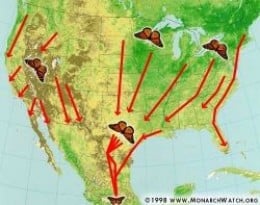
Monarch Fall Migration Routes
This map from MonarchWatch shows the fall migration pathways of the Monarch butterfly to both locations: Mexico and the southern coast of California. Click on the map to go to the larger map on MonarchWatch.
Yearly migration behavior
1. August - September. Most of the monarchs live in the mid-central US
2. September - November migration south
3. March -- Some start north
4. More travel in April and June
5. End of migration to the northern-most points in June and July
Did You Know....?
Monarch butterflies can travel between 50 - 100 miles a day. They may take up to two months to complete their journey south.
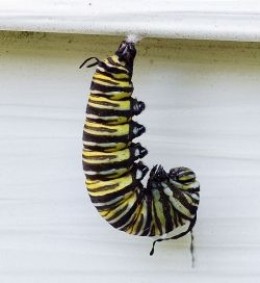
Monarch Butterfly Life Cycle
The North American Monarch Butterfly Life Cycle goes through four generations each year.
The population that overwinters in Mexico and California starts to mate and then head north in February and March to find milkweed plants to lay their eggs (Generation 1 of the new year). The eggs hatch into caterpillars after about four days, and the caterpillars eat milkweed and grow larger.
After two weeks, the caterpillars transform into chrysalises. After another 10 days the adult monarch butterfly emerges from the chrysalis.
This adult lives only from 2 - 6 weeks, and dies after laying the eggs for Generation 2. Generations 2 and 3 follow the same pattern, perhaps flying a little further north, laying eggs for the next generation, then dying.
Generation 4 is born in August and September, and instead of laying eggs, they migrate south and overwinter in California or Mexico. They may live six to eight months, until its time to lay eggs for Generation 1 of the next year.
Go to The King of Butterflies -- The Monarch Butterfly to see a series of beautiful photos of the different stages in the monarch life cycle. (Check out especially the chrysalis -- it looks like a jade with gold ornament!)
Monarchs Overwintering in Mexico
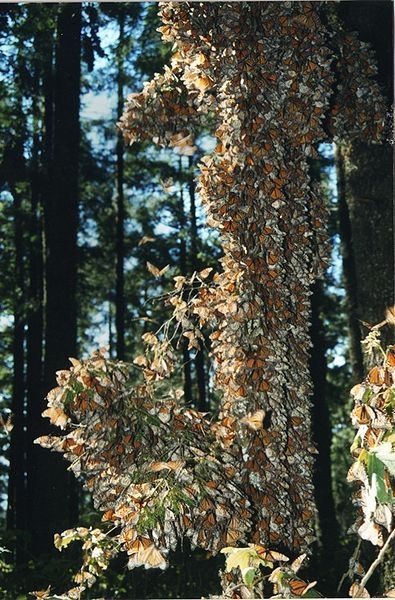
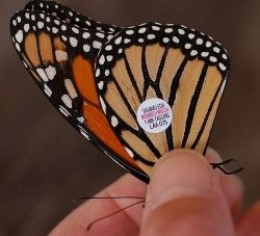
Monarch Watch Tagging Program
The Monarch Watch tagging program was developed as a way to study the pathways that monarchs east of the Rockies take as they migrate south. People who find a tagged monarch are requested to email or call to report when and where they found it. The small tag includes the website and phone number along with the ID number.
Of course not many people are aware of this program! Still, a small percentage of tagged monarchs are caught and reported each year, en route to Mexico, or in Mexico.
Volunteers of the tagging program are instructed how to safely catch and place small tags on monarchs. They record the ID number on the tag, and when and where the monarch was tagged. They send this information back to Monarch Watch.
Read Tagging Monarch Butterflies (on Glorious-Butterfly.com) for one volunteer's experience in catching and tagging butterflies for the Monarch Butterfly Tagging Program.
As a way to encourage more data collection from tagged butterflies in Mexico, the local farmers are paid $5 for each tagged butterfly that they report.
The Long Journey Home - Video
How do monarchs know where to go? How do we determine their routes?
More information about the Monarch Watch Program.
It's Still a Mystery....
We don't really know how monarchs know where to go in the winter. They often roost in the same trees that the previous year's migrants visited.
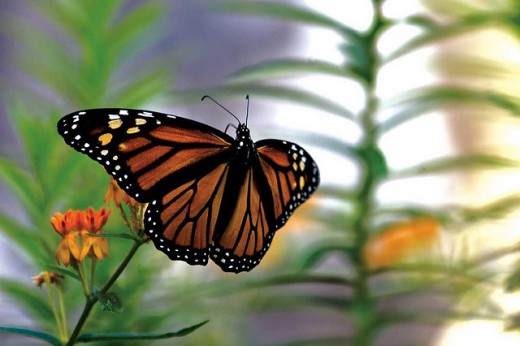
Read More About Monarch Butterflies
- Journey North's Monarch Butterfly Migration Tracking Project
Help track the monarch butterfly migration each fall and spring as the butterflies travel to and from Mexico. Report your own observations of migrating butterflies to real-time migration maps. - Monarch Butterfly Migration 2010/2011
The Monarch butterfly migration route takes these insects thousands of miles from northern Canada down to the Oyamel forests of Mexico. - Monarch Lab: University of Minnesota
Unlike most other insects in temperate climates, monarch butterflies cannot survive a long cold winter. Every fall, North American monarchs fly south to spend the winter at roosting sites. - Monarch Butterfly Migration and Overwintering
The Monarch Butterfly website is an interagency effort to educate the public and increase understanding of monarch butterfly biology and conservation. - Monarch Butterfly Migration
Article all about the how and why of Monarch Butterfly Migration. More Monarch articles here too. - The King of Butterflies --The Monarch Butterfly
Monarch Butterfly information resource. Pictures, migration, life cycle, conservation, and links to more Monarch Butterfly websites.
